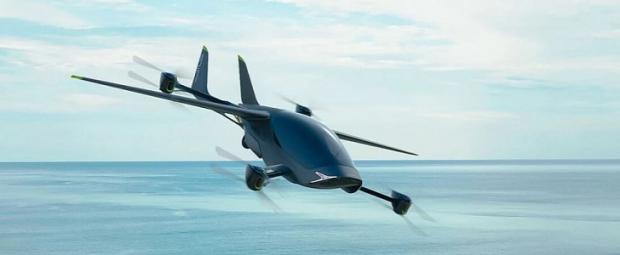
Breaking News
6.8 SPC vs. 300 Blackout: Powering Up the AR Platform
 Autism Study By McCullough Foundation Begins New Era of Free Scientific Inquiry
Autism Study By McCullough Foundation Begins New Era of Free Scientific Inquiry
 REVOLUTION DAY 8: Libertarians JOIN The Revolution
REVOLUTION DAY 8: Libertarians JOIN The Revolution
 US Government and Westinghouse $80bn Nuclear Reactor Deal
US Government and Westinghouse $80bn Nuclear Reactor Deal
Top Tech News
 Graphene Dream Becomes a Reality as Miracle Material Enters Production for Better Chips, Batteries
Graphene Dream Becomes a Reality as Miracle Material Enters Production for Better Chips, Batteries
 Virtual Fencing May Allow Thousands More Cattle to Be Ranched on Land Rather Than in Barns
Virtual Fencing May Allow Thousands More Cattle to Be Ranched on Land Rather Than in Barns
 Prominent Personalities Sign Letter Seeking Ban On 'Development Of Superintelligence'
Prominent Personalities Sign Letter Seeking Ban On 'Development Of Superintelligence'
 Why 'Mirror Life' Is Causing Some Genetic Scientists To Freak Out
Why 'Mirror Life' Is Causing Some Genetic Scientists To Freak Out
 Retina e-paper promises screens 'visually indistinguishable from reality'
Retina e-paper promises screens 'visually indistinguishable from reality'
 Scientists baffled as interstellar visitor appears to reverse thrust before vanishing behind the sun
Scientists baffled as interstellar visitor appears to reverse thrust before vanishing behind the sun
 Future of Satellite of Direct to Cellphone
Future of Satellite of Direct to Cellphone
 Amazon goes nuclear with new modular reactor plant
Amazon goes nuclear with new modular reactor plant
 China Is Making 800-Mile EV Batteries. Here's Why America Can't Have Them
China Is Making 800-Mile EV Batteries. Here's Why America Can't Have Them
Air targets mass production and fun with its One personal eVTOL

But there's another class of eVTOL starting to pop up here and there that's more about the pleasure of flight than about cheap A-to-B transport: the buy 'n' fly personal eVTOL.
Here's a new one out of Israel. The Air One, best we can tell, is a fixed-wing two-seater that conducts VTOL operations via eight vertical lift rotors mounted coaxially on four pods extending from the front of the cabin and the twin tail fins.
It appears to have retractable landing gear, and the sleek-looking cabin pops up to let the pilot and passenger hop in and out. Designed as an aircraft owners can fly for themselves, it gives you a glass panel forward of your feet through which you can see some of the ground below as you come in for landing. That's a nice practical touch, as are the collapsible wings, which will presumably squish this thing down small enough to fit in a garage.
While it's a winged design, it doesn't appear to have a pusher prop. So while we wouldn't call it a straight multicopter, it probably doesn't fit in the lift & cruise category either. Instead, the wings are mounted with a rearward tilt, such that they level out when the aircraft tilts forward to achieve forward motion, producing lift that takes some stress off the props.
This is an interesting take on things – the thrust from the props always has a significant vertical component – but it doesn't seem to suffer from too much inefficiency as a result of the lack of a pusher prop. Air promises a very decent range of 110 miles (177 km) per charge, endurance of about an hour and cruise speeds up to 155 mph (250 km/h).
The company is working on its own "fly by intent" control system, designed to make flying this thing as easy and accessible as possible. It's also developing an AI-enabled monitoring system to perform "frequent inspections of the vehicle and eliminate(s) checklists for riders to ensure paramount safety."

 China Innovates: Transforming Sand into Paper
China Innovates: Transforming Sand into Paper

